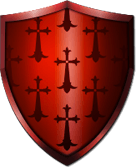Checks and balances may sound like something that you talk about when dealing with finances. But this system actually describes how the three branches of government work together to ensure that no one person or group has all of the power.
When the Constitution of the United States was written, the people were looking to avoid being controlled by one ruler with absolute power. Instead, they believed that if power were divided between three different groups, the executive, legislative, and judicial branches, they would work to keep each other balanced.
This is called the separation of powers. Each branch must depend on the other in order to get things done and to keep the United States functioning properly.
The Three Branches of U.S. Government
The three branches of the U.S. government are the executive, legislative, and judicial branches. Each branch of government has its own set of abilities:
- Legislative Branch: consists of Congress. This includes the House of Representatives and the Senate. Each person represents a state, and one of the main purposes of this group is to create laws.
- Executive Branch: President of the United States heads the executive branch, which includes the vice president as well as the members of the Cabinet. The Cabinet is a group of men and women who run federal agencies. This branch works to administer and enforce the laws created.
- Judicial Branch: Supreme Court leads the judicial branch. These nine judges work to interpret the laws that are created and make sure they comply with the Constitution. It’s easy to see how these groups must work to balance each other as they attempt to create, enforce, and interpret the laws.
History of Checks and Balances
The process of creating the Constitution was a real challenge. Everyone involved had concerns about how the government would be run and what person or group would have power. One person who heavily influenced the idea of checks and balances was Baron de Montesquieu, a French nobleman who wrote about the idea of having three branches of government that all had some amount of power over the others in order to prevent one group from having too much control. His idea was to avoid the abuse of power.
This concept is found throughout the Constitution. For example, the legislative branch can create laws, but the judicial branch can determine that those laws are unconstitutional. However, the Supreme Court justices are chosen by the president, the head of the executive branch. But while the president makes that selection, the Senate, part of the legislative branch, approves the decision.
Each branch must depend on the other in order to keep things running smoothly. Many times, this presents challenges along the way. It also means that it takes time to get things done. While that can be frustrating, it’s important to remember that this process is in place to make sure that no one has all of the power.
Purpose of Checks and Balances
Imagine what would happen if the president of the United States made all of the decisions without the legislative and judicial branches. The president would be able to do whatever they wanted. This is a lot like the type of government that the creators of the Constitution had just gotten rid of.
They knew what it felt like to have a king tax them without being able to have any say about it. They knew what it was like to be treated unfairly without having anyone represent their best interests. Under the system of checks and balances, Congress is there to restrict the president’s power.
For instance, a local Cincinnati criminal defense attorney has confirmed that the president meets with foreign leaders and has the power to sign treaties, but Congress must ratify them in order for them to take effect. And the president isn’t the only one who needs to have their power reined in.
If the legislative branch were to have complete control, a group of people could do whatever they wanted, provided that most of them could agree. Instead, the legislative branch creates laws, but the president can veto them, and the judicial branch has the power to strike down those laws if they’re against the Constitution.
- “You Better Check Yourself!” Separation of Powers and Checks and Balances in the U.S. Government (PDF)
- Legislative Oversight
- Separation of Powers
- Checks and Balances and the Three Branches of Government
- Separation of Power in Action: U.S. vs. Alvarez
- Learning Adventures: Checks and Balances
- Bill of Rights for Kids
- Branches of Government for Kids
- Becoming an Italian citizen
- The Mini Page: Checks and Balances
- The Role of Federal Judges: Their Duty to Enforce the Constitutional Rights of Individuals When the Other Branches of Government Default (PDF)
- Domestic Violence Attorney in Cincinnati



















